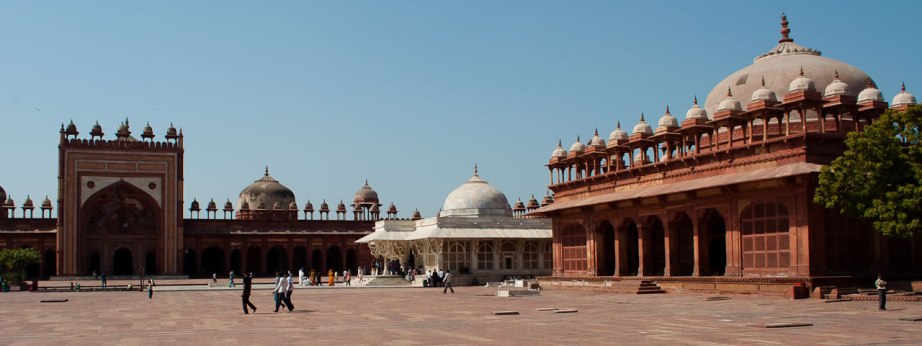
Mughal Emperor Akbar, who was known for his interest in literature, architecture, and the arts, built the royal city at Fatehpur Sikri, situated 26 miles west of Agra (city of the Tajmahal, India). He is also reputed to be a very tolerant ruler and the buildings at Fatehpur Sikri blend both Islamic and Hindu elements in their architectural style. One of the buildings even reflects Din-e-Ilahi, the new faith founded by Akbar.
Popular legend has it that since Akbar was without a heir for a long time, he made a pilgrimage to the renowned Sufi saint, Sheik Salim Chisti, to seek his blessings. Later, when a son -- later to be known as Jahangir - was born to him, Akbar built the new capital to mark his birth. Construction of the new ceremonial capital, with its elaborate palaces, formal courtyards, reflecting pools, harems, tombs and a great mosque, commenced in 1571. A large number of masons and stone carvers worked hard for 15 years on its construction. Shortly after the work was completed, the city had to be abandoned for lack of adequate water supply.
Fateh Pur Sikri Fatehpur Sikri is now a World Heritage site. The Panch Mahal , or Palace of Five Storeys, and the Buland Darwaza, a massive gate which provides entrance to the complex, number among the finest specimens of Mughal architecture. It is also arguably the greatest accomplishment of Mughal architecture, surpassed only in reputation but not in its beauty and the awe it inspires by the Taj Mahal.
The Diwan-e-Khas entirely unique in its concept is a tall vaulted room with an intricately carved central pillar and capital supporting a platform that once held the emperor's throne.